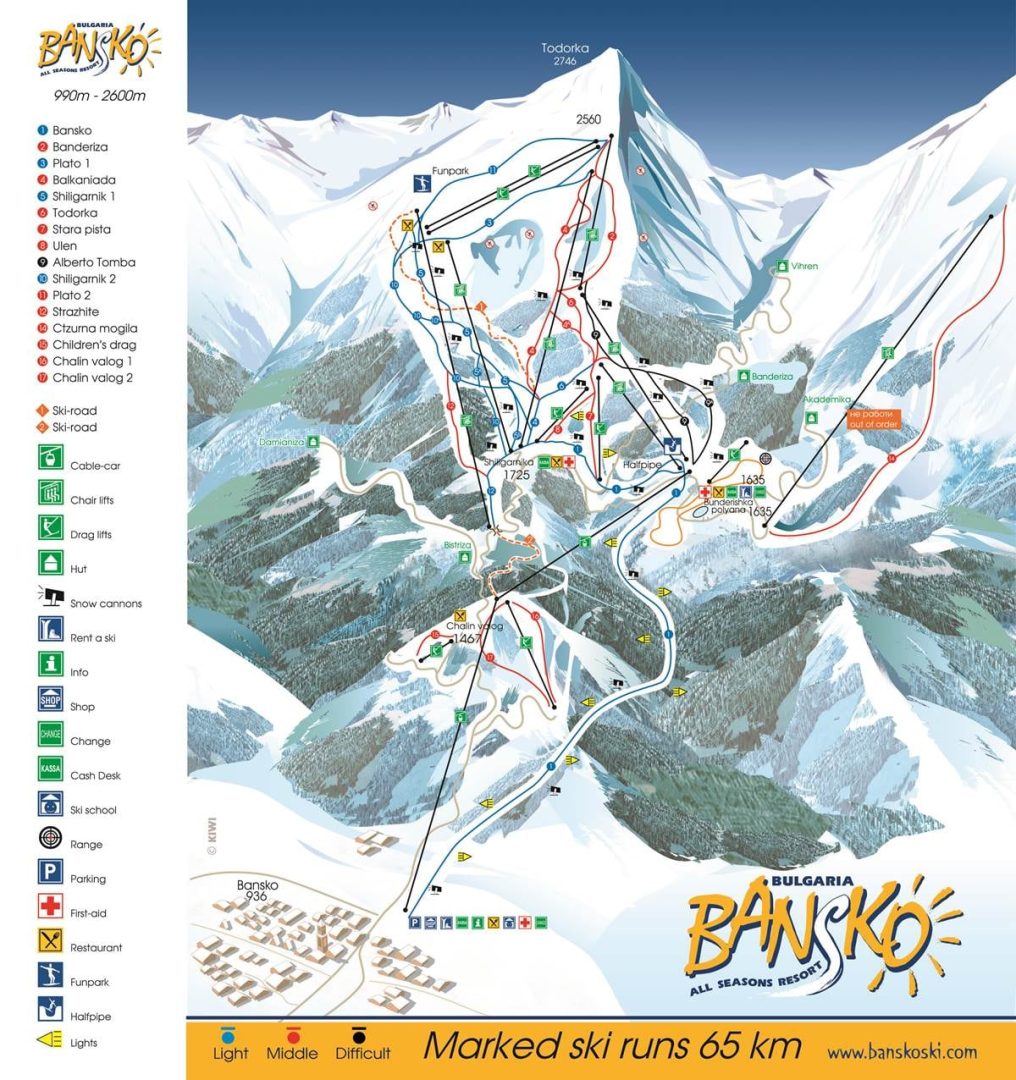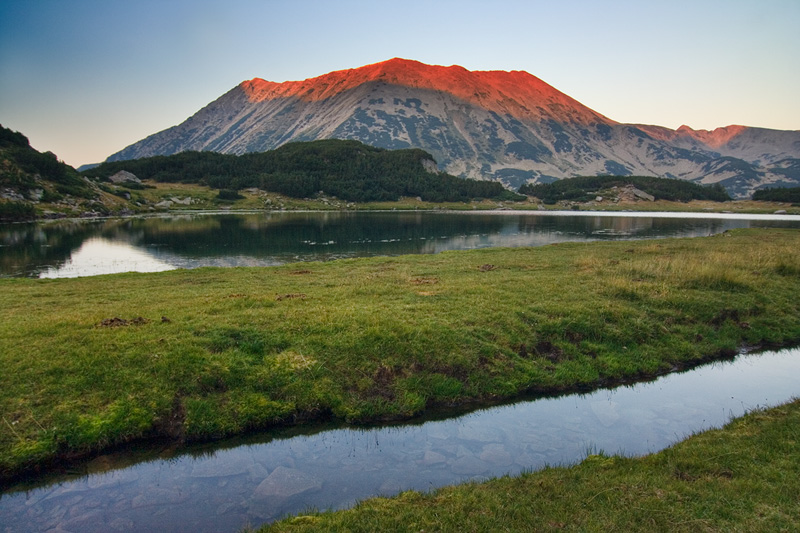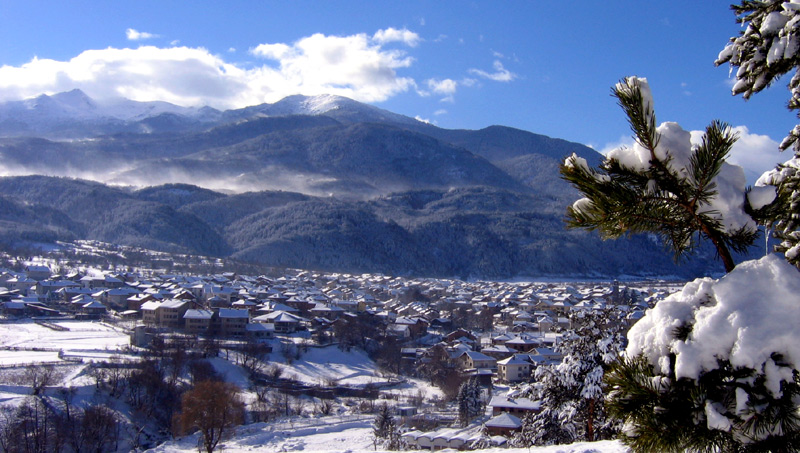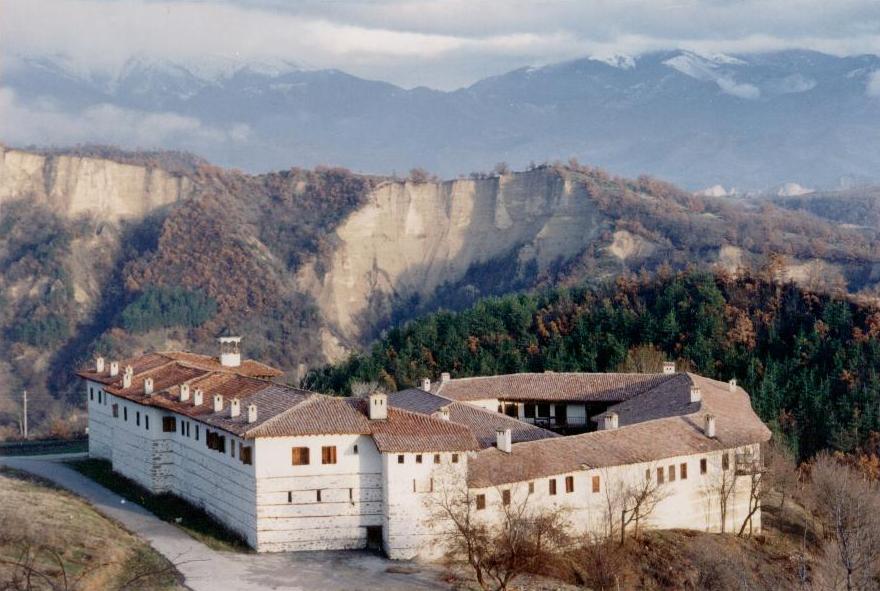A brief history of Bansko
Bansko is one of the cities that remain an important trace in centuries-old Bulgarian history and to this day keeps alive the traditions of the past. We cannot say exactly when it appeared on the map, but scientists assume that the settlement was formed when several hamlets merged in the 9th or 10th century.
Then the local population made a living mainly through livestock farming and agriculture. For the first time, Bansko was mentioned in an official document in 1576 in an Ottoman register of the Jelepkeshans (sheep farmers).
During the Renaissance, the city emerged as one of the important cultural and spiritual centers in the Bulgarian lands. At that time, the Banskalians actively developed trade both with the neighboring countries and with the countries of Western Europe. This allows local traders to accumulate large capitals.
In addition, however, the connection with the outside world keeps awake the consciousness of the local inhabitants, who take an active part in the national liberation struggles of the Bulgarian people. The mountain town is the birthplace of important historical figures such as Father Paisius, Neophyte Rilski, Nikola Vaptsarov and others.
Activities and entertainment
Bansko is one of the native resorts that offers a wide variety of activities and entertainment, both in the summer and in the winter season. Therefore, it is regularly visited by both Bulgarian and foreign tourists.
Bansko is the most popular ski resort in Bulgaria. During the active winter season, guests of the city can go skiing on any of the 16 slopes, which have a total length of more than 70 km. Whether you’re a beginner, advanced or pro, you’ll find the perfect course to show off your skills.
Also, in addition to the slopes, the resort has one cabin, six 4-seater, and two 8-seater lifts that allow easy access to the slopes. Last but not least, there is also a ski school where those who wish can acquire skills. The fact that prestigious competitions such as the World Ski Cup and the World Snowboard Championship are held there for several years in a row speaks for the good conditions for winter ports in Bansko.
One of the activities that avid mountaineers can enjoy is nature walks. Bansko and the region have many natural attractions that are worth visiting. The city is in close proximity to the Pirin National Park, where the second highest peak in Bulgaria – Vihren – is located. During the warmer months, tourists can enjoy horseback riding, buggy rides, rock climbing, rafting and kayaking, fishing, and more.
Many hotels in Bansko offer packages with included spa treatments, which those looking for comfort and tranquility can enjoy. Such are massages, steam baths, saunas, various beauty and cosmetic procedures.
In the ski resort number 1 in Bulgaria, you can enjoy delicious Bulgarian cuisine. Most hotels in Bansko offer authentic dishes in their restaurants. They can also be enjoyed in the cozy taverns and pubs that abound in the area.
Last but not least, the city hosts various cultural events and festivals throughout the year, which attract the interest of many visitors. The city is also known for its nightlife. It is no coincidence that it is one of the preferred destinations for the student holiday – December 8. In the city you will find a huge variety of restaurants, pubs and night clubs.
Natural sights around Bansko
Bansko is located at the foot of one of the most magnificent mountains in Bulgaria – Pirin. Thanks to this fact, the city owes its beautiful nature and wonderful conditions for tourism. In the following lines, we will briefly tell you about some of the most interesting places that every nature lover should visit at least once.
Baikusheva mura
Baikusheva mura is the oldest coniferous tree in Bulgaria and one of the oldest on the Balkan Peninsula. It is located about 15 km from Bansko, in the area of Burdenitsa. It was discovered and described for the first time at the end of the 19th century by the famous Bulgarian forester – Konstantin Baikushev. Thus, in history, the black mulberry remains to bear his name. The tree has truly impressive dimensions, which is not surprising given the fact that it is more than 1300 years old. Its height is as much as 26 meters, and its circumference is almost 8 meters. This natural phenomenon will surely impress both young and old.
Vihren Peak
Vihren peak is the second highest peak in Bulgaria and third on the Balkan Peninsula. It is 2,914 m high, second only after to the record holder Musala (2,925 m). Vihren is one of the most challenging peaks to climb because of the steep sections along the route and also the changing weather conditions. So if you decide to go on this adventure, be sure to check the weather forecast and gear up well – with comfortable shoes, warm clothes, water, food and sunscreen.
National Park “Pirin”
Pirin National Park is one of the three functioning national parks on the territory of the Republic of Bulgaria. It covers an area of more than 40 thousand hectares. It was created in the 1960s and its main purpose is to preserve the unique plant and animal species that can be found in the area. On the territory of the national park there are also two large reserves – Jirnitsa and Yulen. A family hike in the mountains is a great opportunity to relax while little adventurers learn about nature and why it’s important to protect it.
Park for dancing bears in Belitsa
The park for dancing bears was opened in 2000 in the town of Belitsa. It is dedicated to a good cause, namely to bring dancing bears back into nature. Behind the implementation of this project are the “On Four Paws” foundation, as well as the foundation founded by the famous actress Brigitte Bardot. For its almost two decades of operation, the park managed to house all 25 registered dancing bears in Bulgaria and even several from neighboring countries. Visitors to the park have the opportunity to learn more about these interesting animals and meet some of them. Children will surely be very excited about this meeting.
The “Wedding” rock complex
The “Wedding” rock complex is located less than 30 km from Bansko, near the village of Osenovo. The natural phenomenon is limestone rocks that resemble human figures. According to a local legend, centuries ago, wedding parties set out from the neighboring village to collect the bride. The mother-in-law, who was also with them, had to go back because she forgot to take something important. She specifically ordered the wedding guests to climb her and not go without her. However, they did not comply with her order and moved on. Angered by the fact, she cursed them to turn into stone figures. And so they remain to this day.
Dobarsko village
Dobarsko is a picturesque mountain village, which in recent years has attracted more and more tourists who want to enjoy the silence and nature. An interesting legend is told about the village, which claims that during the Middle Ages some of the blinded Samuel soldiers settled there. They stay in the village on the way to the Rila Monastery. However, they find spring water there that relieves the pain in their eyes and they decide to settle there permanently. In the village there is also the church “St. St. Theodore Tyrone and Theodore Stratilatus”, in which some very interesting and unconventional wall paintings can be seen. If you have the opportunity, take the time to visit the village of Dobarsko. It is located only 17 km. from Bansko and is a great place for a walk.
Dobrinishte
Dobrinishte is a resort town located only 6 km from Bansko. Every year it becomes a popular destination for spa tourism. Many hotels offer a variety of spa treatments and services. In addition, Dobrinishte is known for its warm mineral springs, which have a healing effect on various disease states. The town also has a ski slope and a lift, which offer good conditions for skiing in winter. There is also the only edelweiss garden in our country.
Historical sights in and around Bansko
The city of Bansko and the region are full of many historical sights that you can visit. Some of them are very popular for tourists, others not so much, but they all preserve a piece of Bulgarian history. Over the centuries, Bansko was formed as an important commercial, spiritual and cultural center in our lands, and the evidence of this has been preserved to this day. Here are some of the interesting places we advise you to visit the next time you are in the area.
The Church of St. Trinity
One of the symbols of the city is undoubtedly the Orthodox Church of the Holy Trinity, which is located in the central part of Bansko. It was built 184 years ago, back in 1835, and is one of the largest churches in the country. The history surrounding its construction is very interesting, since, as you can see for yourself, it happened at a time when the Bulgarian lands were within the borders of the Ottoman Empire. Because of the religious differences, the construction of Christian churches required special approval from the Sultan, which, for understandable reasons, was not easily obtained. However, the Banskalis were persistent and their noble cause was finally crowned with success.
House-Museum “Nikola Y. Vaptsarov”
Bansko is the birthplace of a number of important personalities who have found their rightful place in history. In the central part of the resort town is the house where the famous poet Nikola Vaptsarov grew up. It was officially opened to visitors in the early 1950s, and its opening marked the beginning of museum work in the city. If you haven’t been there, we advise you to take the time to visit Vaptsarov’s birthplace. The exposition will immerse you in the authentic atmosphere of Bansko, and you will also learn more about Vaptsarov’s personality, and you will also see interesting objects related to his life.
Neophyte Rilski House-Museum
The Benina House is another interesting place to visit while in town. This is the birthplace of Nicholas Benin, who, however, remains known in our history by his monastic name – Neofit Rilski. He is one of the important figures of the Bulgarian educational movement and is the author of a number of textbooks and manuals. The museum exhibits personal belongings of Neofit Rilski, as well as some of his most significant works. Among them is “Bulgarian Grammar”, which he wrote in 1835.
Spiritual and Historical Center “St. Paisius of Hilendar”
The spiritual and historical center “St. Paisius Hilendarski” opened its doors in 2008. As is known, history knows a lot about the work of the Hilendar monk, but little about his life. A number of evidences indicate that Father Paisii’s hometown was Bansko. Therefore, on the initiative of the local residents, a spiritual-historical center was built in the resort town at the place where it is assumed that his native house was located. Visitors can see an exact copy of the cell in the Hilendar Monastery, where Paisiy created perhaps the most significant work in Bulgarian history – “History of Slavonic Bulgaria” in 1762. This is definitely a place worth visiting.
The nameless city
The nameless city is another of the historical sights that we recommend you to visit. If you are staying at a hotel in Bansko, it is located about 5-6 km in the direction of Dobrinishte. It was discovered by chance in 2003, while the restoration of the nearby chapel “St. Nicholas”. The remains of the ancient city spread over a large area. To this day, scientists cannot determine what this historical place is, so they call it simply “the nameless city”. A curious fact is that remains of bodies with a height of about 2 meters were found there, which are not at all typical sizes for ancient people. Visit the Nameless City and learn more about all the mysteries associated with it while walking in nature.
The Rozhen Monastery
Rozhen Monastery “Rozhdestvo Bogorodichno” is the largest monastery in the region. It was built in the Middle Ages and is one of the most significant spiritual and cultural centers throughout the centuries. It also houses the miraculous icon of St. Virgin Vratnica, who is believed to cure diseases and grant wishes. The temple festival is celebrated every year on the 8th of October. Christian believers from all over the country gather the night before to spend the night in the temple and pray for healing. In case you decide to visit the Rozhen Monastery, keep in mind that it is located a little more than 100 km from Bansko. Therefore, it is best to stay in one of the hotels in the winter capital in order to have enough time to explore this landmark.
The Rhodope narrow-gauge line Septemvri – Dobrinishte
A traveling landmark also passes through Bansko – the Rhodope narrow-gauge railway. This train is very special, not only because the distance between the rails is only 76 cm (hence the name narrow gauge), but also because it is the last functioning narrow gauge in Bulgaria. Its history begins more than 100 years ago, when the decision to build the line was made. Today, visitors to the city can take a ride on this unique train that has preserved a piece of Bulgarian history and admire the beautiful panoramic landscapes as they travel.
Traditional Bulgarian dishes typical of Bansko and the region
Bansko is one of the places in Bulgaria where you can enjoy traditional dishes prepared according to authentic recipes. They are passed down in families from generation to generation and have preserved their specific way of preparation. Both Bulgarian tourists and foreigners from all over the world visit the local restaurants, taverns and pubs to enjoy the delicious dishes with a glass of good wine.
If you haven’t had the opportunity to try dishes from traditional Banja cuisine, we advise you to fill in this gap. Let us tell you a little more about the specialties to try when you visit Bansko.
Perhaps the most famous dish from this region is Banska Kapama.
Several types of meat are used for its preparation. The recipe can vary, but usually it’s chicken, pork and beef, as well as bacon and blood. In addition to them, sauerkraut, rice and beets are added. The dish is cooked over a slow fire in a deep clay pot. As you can see, the capama is quite a nutritious dish. That is why the Banskalians usually prepared it during the winter season for important family holidays. One of the characteristic features is that the dish is cooked for 5-6 hours, and sometimes more. This is most likely due to the fact that at one time women were very busy with household chores, so most meals were left to simmer while they did other tasks.
Another traditional dish that is prepared in this way is chomlek.
It is made with beef or pork, and various vegetables are added to it – tomatoes, carrots, coarsely chopped potatoes. To make it even tastier, a small amount of wine is added. The spices are also carefully selected and contribute to the incredible fragrance of the dish. We advise you to consume it in the company of a glass of red wine. This combination is a real delight for the senses.
In the restaurants in Bansko you have the opportunity to try perch with bacon and bacon.
Behind this seemingly complicated name, there is a very tasty dish. It consists of ripe beans cooked in a pot, to which are added pickled beets (waiting) and bacon. A great choice for the cooler months.
Of course, after all the meat dishes we have told you about, we cannot miss the most popular delicacy in the Pirin region, namely Banski starets.
This appetizer is traditionally made from raw dried pork. It is left to stand for about 6 months. Therefore, the best opportunity to try this delicacy is in the summer. In the past, Banskalians only put it on the table for very important occasions, such as engagements and weddings, for example.
If you are not a fan of meat, but rather prefer sweet delights, the Ban cuisine will offer something for you as well. For breakfast you can try traditional kukurini. These are doughy sweets that, after being fried, are sprinkled with a large amount of powdered sugar. Another famous dessert is the so-called Borek. It is prepared with pumpkin and walnuts. In most establishments where it is offered, it is usually topped with ice cream or condensed milk.
In conclusion, we can say that Bansko is one of the places where you can enjoy authentic Bulgarian cuisine. If you haven’t tried any of these dishes before, we advise you to do so because they are really delicious.





